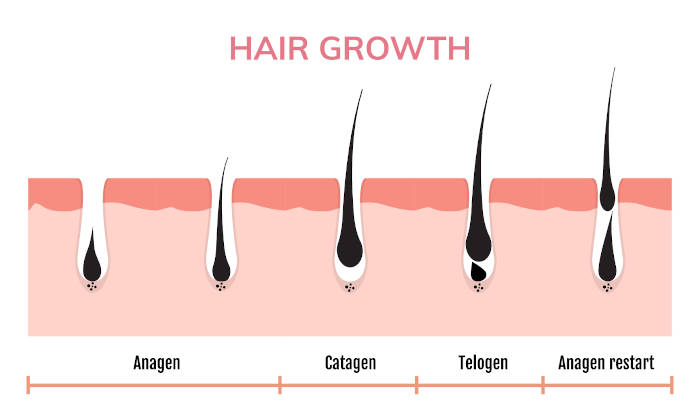Follicular Unit Extraction
FUE Hair Transplants
Follicular Unit Extraction, also known as FUE Hair Transplantation, is a procedure that allows our patients to keep their donor hair very short with barely perceptible scars. In the past, traditional “strip harvesting” has produced a linear scar which has caused concern for patients. With the Imami FUE process, every follicular unit is individually extracted, leaving the donor area with punctate barely perceptible scars. The tradeoff is that the procedure takes much more time and usually involves fewer hairs transplanted at a time in comparison with a strip procedure. A little extra time commitment is well worth the benefits.

In the 1950’s Dr. Orentreich pioneered hair transplant with the 4mm punch technique. By the 1990’s this gave way to the Follicular Unit Transplantation (FUT) which remains the gold standard for hair transplantation. FUE is a relatively recent refinement of Dr. Orentreich’s work and involves 0.6 to 1.0mm punches to harvest smaller grafts.
Who is a Good Candidate for FUE
Ideal candidates are usually healthy men between the ages of 26 to 75. Women are also candidates. FUE can be used for both small and medium sized donor graft cases. FUE leaves punctate barely perceptible scars allowing patients to carry their hair short. In select cases, FUE may be used to procure grafts from the beard or body.
With FUT one does not shave a large donor area on the back of the scalp. This conceals both the sutures and any linear scar with overlying hair immediately.
Who May Not be a Good Candidate for FUE
Patients who need large graft counts should opt for either FUT or the FUT-FUE combination. Using FUE for large donor graft cases risks prematurely depleting the safe donor area. Patient who do want the back of head clipped short as required for the FUE, may opt for the FUT. Another option for them is the “No Shave FUE” wherein thin linear strips of scalp are clipped and the overlying hair from above covers and conceals the donor site (see No Shave FUE).
Patients with multiple medical problems, heavy tobacco users and those on blood thinners are evaluated on an individual basis by Dr. Imami during the consultation.
How is the FUE Procedure Performed
The patient is provided pre-operative instructions (see Pre and Post-Operative Instructions).
The procedure is conducted under local anesthesia (usually Lidocaine and Marcaine, short and long acting anesthetics, respectively) and a mild relaxant, usually Valium. A wide strip of hair from the safe donor area, along the lower back scalp, is clipped and the area is evaluated to ensure that an adequate number of grafts can be harvested. The local anesthesia is injected into the scalp and an automated FUE devices with small punches (0.7 to 1.2 mm) is used to extract grafts (see Illustration).
Using sterile technique and magnification the grafts are carefully and individually evaluated and trimmed of excess skin and fat if required. Each graft may contain from one to five hair follicles (the average is 2.5 hair follicles per graft). These are minimally manipulated and carefully preserved in cool saline to maximize survival.
The front of the scalp is locally anesthetized creating a “ring block” which effectively numbs the entire top of the scalp. Tiny 0.9 to 1.2mm slits are artistically angled and made in the recipient areas. The grafts are individually placed into the recipient sites. They will protrude about 1mm above the scalp; however, after the swelling resolves, the grafts will lie flush with the scalp.
The patient is provided a prescription for pain relief and post-operative instructions (see Pre and Post-Operative Instructions).
How Long does the FUE Procedure Take
The overall time will vary based on the number of grafts, but the FUE usually requires 5 – 6 hours.
- Check-in, complete consent, pre-op photographs, check vital signs, agree on markings for hairline and transplant sites and take pre-medications (if prescribed)
30 mins
- Numb the donor area
5 – 10 mins
- Harvest the grafts
2 – 2.5 hrs
- Numb the recipient area
5 – 10 mins
- Implant the grafts
2 – 2.5 hrs
- Check vital signs, post op photographs, review post op instructions, schedule follow up appointment
15 mins
Additional Therapies at Time of FUE
There are several supplemental non-surgical therapies that will improve wound healing minimize scarring and maximize the graft-take percentage. Dr. Imami and his team will discuss which therapies would work best for you.
PRP (Platelet Rich Plasma)
No Additional Time
Your blood is drawn midway through your transplant and the PRP is injected in the donor area (to minimize scarring) and the recipient areas (to maximize graft take).
This may be repeated monthly to optimize healing and maximize hair thickness and density.
PRP with Acell®
No Additional Time
Acell®, a wound-healing powder with an acelleular matrix derived with an epithelial basement membrane, is added to PRP and injected just like PRP alone. This activates your adult stem cells to stimulate hair follicles to regenerate, thereby optimizing wound healing and maximizing hair thickness and density.
This may be repeated monthly to optimize healing and maximize hair thickness and density.
PDO (Polydioxone) Threads
No Additional Time
PDO threads are 1-2” long fine strands of absorbable surgical suture material that are inserted into the scalp in areas of hair thinning. We use fine “acupuncture” sized needles to painlessly insert numerous strands which then create an subtle inflammatory response and stimulate the hair follicle to grow.
The strands gradually dissolve over 6 months at which time the procedure may be repeated
Hyperbaric Oxygen Therapy (HBO2T)
90 min/day
HBO2T is medically proven to increase tissue oxygen levels, stimulate new blood vessel growth, activate stem cells, and reduce swelling and the risk of infection. HBO2T sessions should be done the day prior and the day(s) after a transplant.
For patients with medical conditions such as diabetes, poor blood flow, scarring, or prior hair transplants, HBO2T may be started days prior to the transplant and continued for days after to maximize healing. Dr. Imami, who is also Board Certified in Hyperbaric Medicine, will evaluate your situation and make custom recommendations.
When Will I See Hair Growth
Typically, within a few weeks of the transplant, the transplanted hair shaft will enter the catagen phase, and the hair shaft will shed. Then the hair follicle will enter the telogen, or resting phase of the hair growth cycle for about 4-6 months. Finally, the hair follicle will enter the anagen phase and grow to normal length. By about 12 months you should experience maximal hair growth and density.
By adding non-surgical therapies, oral and topical medications, DHT blocking shampoos, and supplements you can decrease the number of hair follicles entering the catagen phase (active hair loss) and shorten the telogen phase (resting phase).

When Can I Repeat My Hair Transplant?
If you are seeking to transplant a different area of the scalp, we can repeat the FUE once the donor area has adequately healed. This usually requires about 3 months.
If you are seeking to add greater density to a recently transplanted area, we recommend waiting 12 months to evaluate the full effect of the transplant. In the meantime, we recommend you consider additional non-surgical therapies, oral and topical medications, DHT blocking shampoos, and supplements.
Experience Healthy, Thicker Hair
"*" indicates required fields
